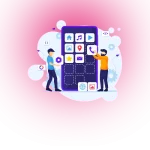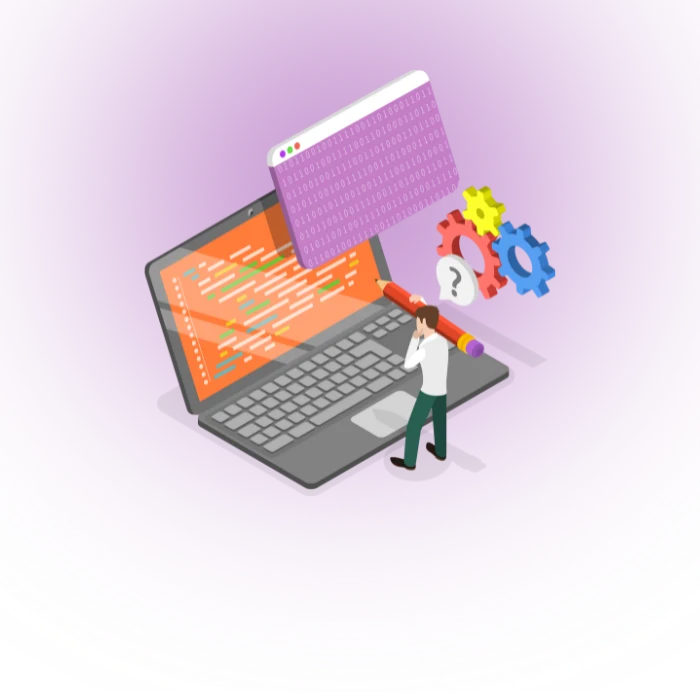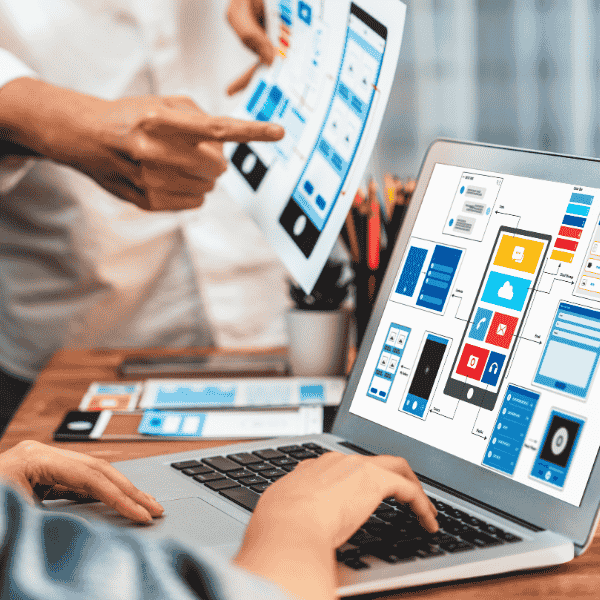Introduction
Welcome to the fascinating world of software, where complex code manages the digital symphony that characterizes our contemporary world. In this investigation, we’ll take a deep dive into the fundamentals of the software, revealing its history, range of manifestations, inner workings, and tremendous impact on our daily lives.
Defining Software
Fundamentally, software performs the role of an ethereal conductor, transforming the inert hardware of our digital devices into practical tools. The intricate interplay of instructions, algorithms, and data that technology performs in response to human needs and desires is a delicate dance. In essence, it breathes life into machines.
Importance of Software in Our Lives
Software has an important role in our daily lives. It acts as the invisible framework of our digital existence, smoothly integrating into all facets of our contemporary environment. Software is the engine that powers communication, entertainment, productivity, and a myriad of other facets of our lives, from the cell phones in our pockets to the supercomputers fueling scientific advancements.
A Brief History of Software
Given that software has through various phases of development, understanding the present necessitates a trip into the past:
The Early Days: Pioneering Software
Software was in its infancy throughout the early stages of computers. Even before the development of contemporary computers, visionaries like Ada Lovelace and Alan Turing created the theoretical groundwork for software. Early computers were controlled by punched cards and mathematical instructions, which signified the invention of software.
The Software Revolution: 20th Century
Software development underwent a tectonic upheaval in the 20th century. Software development became more accessible with the advent of high-level programming languages like Fortran and COBOL. Operating systems also began to appear during this time period, paving the way for the digital revolution that would define the next decades.
Modern Software: The Digital Age
Software has become a fundamental part of our lives as we enter the twenty-first century. Software has invaded every aspect of society thanks to personal computers, mobile devices, and the internet’s widespread use. Simple applications have given way to sophisticated systems that power entire sectors and propel ground-breaking advances.
Types of Software
The diversity of software is astounding, with each category serving a unique purpose. Let’s explore the major types:
System Software
Operating Systems: These act as a bridge between hardware and software, managing resources and giving consumers an intuitive user interface.
Device Drivers: These are specialized software elements that make it easier for the operating system and hardware to communicate.
Utilities: These utilities are made to improve security, preserve hardware health, and maximize system performance.
Application Software
Productivity Software: Word processors, spreadsheets, and presentation software all fall under this category, which streamlines and improves productivity across a range of jobs.
Entertainment Software: This software category provides entertainment and leisure-related products, such as video games, multimedia players, and streaming platforms.
Educational Software: It comprises interactive tutorials, language learning apps, and educational games that are all intended to help with learning and skill development.
Gaming Software: It includes both console games and mobile games that are designed exclusively for gaming experiences.
How Does Software Work?
Understanding the inner workings of software is fundamental. It operates through a series of intricate processes:
The Role of Programming Languages
Software developers interact with computers by means of programming languages. These numerous languages, each with their own syntax and function, act as a link between human intention and machine execution.
Compilation vs. Interpretation
The two main methods for running software code are compilation and interpretation. While interpretation translates and runs code line by line, compilation entails transforming the complete program into machine language prior to execution. Each technique has benefits and applications.
Execution of Software Programs
The code comes to life when a user interacts with a piece of software. The computer performs duties that include input processing, data manipulation, and the creation of desired outputs while painstakingly following the instructions recorded inside the software.
Software Development Life Cycle
Software development is a methodical, structured process that guarantees effectiveness and quality throughout the product’s lifecycle:
Planning Phase
In this early stage, specific project goals are established, timetables are established, and necessary resources are allocated. Any software project’s success depends on having a clear roadmap.
Requirements Gathering
It is crucial to comprehend the demands and hopes of stakeholders and end users. In this stage, the purpose of the program is precisely determined through talks and analysis.
Design and Architecture
The software’s design is created in this stage. It describes the organization, elements, and relationships that will determine the final result. It is comparable to the architectural designs for a large structure.
Implementation and Coding
Once they have the design in hand, developers get to work writing the real code. As lines of code are written and improved, this phase gives the software life.
Testing and Quality Assurance
Thorough testing is done to make sure the software works as planned. To ensure a seamless user experience, bugs, and problems are found and fixed.
Deployment and Release
The program is released for either public or private use after being extensively tested and authorized. This signifies the point at which users can finally take advantage of its capability.
Maintenance and Updates
Deployment is not the end of the journey. To keep the software current, safe, and optimized, there must be constant upkeep, updates, and patches.
Open Source vs. Proprietary Software
The software comes in two primary flavors, each with its characteristics and implications:
Defining Open Source Software
Open-source software is created collaboratively, and the public can access its source code. It promotes civic engagement, openness, and a spirit of cooperative invention.
Advantages and Disadvantages
Flexibility, cost-effectiveness, and the energy of a worldwide community are all benefits of open-source software. It might not have extensive documentation or commercial support, which makes it difficult for certain users and great for others.
Proprietary Software: Pros and Cons
Contrarily, proprietary software is owned by a business, and access to its source code is constrained. A refined user experience is prioritized under this paradigm, but customization may be limited and licensing costs could apply.
Software as a Service (SaaS)
The advent of cloud computing has ushered in a new software distribution model known as SaaS:
What is SaaS?
Software as a Service relieves users of the burden of installing and maintaining software locally by delivering software via the internet on a subscription basis. It has altered how organizations and people access and use software.
Benefits of SaaS
Scalability, cost-effectiveness, automatic upgrades, and accessibility from any location with an internet connection are all features of SaaS. Due to these benefits, it has become the preferred model for many businesses.
Examples of Popular SaaS Applications
Popular SaaS programs include Microsoft 365, Salesforce, Dropbox, and Google Workspace. The way we interact, manage data, and do business has been completely changed by these technologies.
The Impact of Software on Industries
The transformational impact of software permeates many businesses, transforming how they run, and revolutionizing their fundamental tasks:
Healthcare
Software is crucial in the healthcare industry. Patient records, diagnostics, and treatment planning all involve it. In addition to raising care quality, this boosts productivity and eases administrative responsibilities.
Finance
For a variety of functions, including algorithmic trading, risk assessment, and online banking, the financial sector significantly relies on software. The management of finances has become easier and more effective thanks to these technologies.
Education
Thanks to instructional software, the field of education has undergone a digital revolution. It improves learning in the classroom and makes online learning possible, giving students a more individualized educational experience.
Entertainment
Software is essential to the entertainment sector since it powers video games, streaming services, and content production. These innovations provide audiences everywhere with fascinating and captivating experiences.
Manufacturing
Manufacturing production processes have been improved through software-driven automation and robotics. As a result, efficiency and precision have grown, producing items of superior quality.
Transportation
Software is essential to modern transportation, from driverless vehicles to traffic management systems. It improves sustainability, effectiveness, and safety in this industry.
Challenges in Software Development
Despite its transformative potential, software development is not without its challenges:
Security Concerns
Software systems are networked, which makes them vulnerable to hacker attacks and data breaches. To secure people and data, it is crucial to have strong security measures.
Compatibility Issues
It takes a lot of effort and time to make sure software runs smoothly on a range of hardware, operating systems, and setups. Problems with compatibility may cause user annoyance and lost business opportunities.
Scalability Challenges
Software must scale to handle greater demand as user bases expand without sacrificing performance. For developers, finding this balance can be extremely difficult.
Keeping Up with Technological Advancements
The technological environment is always changing. Software engineers must keep up with emerging technologies and upgrade their abilities on a constant basis to stay relevant.
Future Trends in Software
The future of software is brimming with exciting possibilities:
Artificial Intelligence and Machine Learning
The future of software will be revolutionized by AI and machine learning. They make it possible to make intelligent decisions, do predictive analyses, and automate processes, creating new opportunities across numerous industries.
Internet of Things (IoT) Integration
There will be an increase in connected devices as a result of the Internet of Things. Software solutions that can easily handle and analyze the enormous data streams produced by these devices are also required.
Cloud-Based Software Solutions
The software environment will likely continue to be dominated by cloud computing. It provides adaptable, scalable, and affordable options for launching and maintaining software programs.
Quantum Computing’s Potential
With its considerably quicker processing speed, quantum computing has the potential to open up new directions in software development. It might revolutionize fields like encryption and pharmaceuticals by solving complicated issues that are currently thought to be intractable.
Ethical Considerations in Software Development
As software permeates more aspects of human life, moral questions become more important:
Data Privacy and Security
Privacy protection and data security must be prioritized. Protecting user information requires strong encryption, secure data management procedures, and transparent data usage guidelines.
Bias and Fairness in AI
Fairness must be considered when developing AI algorithms. For these algorithms to function fairly and avoid prejudice, biases must be addressed.
Environmental Impact
To reduce the environmental impact of technology, sustainable software development techniques are crucial. These include energy-efficient algorithms and environmentally friendly data centers. Adopting eco-friendly practices and reducing energy usage are essential first measures.
The User Experience (UX) in Software
The user experience is a pivotal aspect of software design:
Importance of User-Centered Design
Software interfaces are made to be intuitive, entertaining, and accessible by putting the user’s needs and preferences first. The user’s experience is prioritized throughout the design process using a user-centered approach.
Accessibility and Inclusivity
Software should be created with users with impairments in mind, encouraging inclusivity and equal access for everyone. Following accessibility standards and guidelines is necessary for this.
User Testing and Feedback
User input is crucial for developing software. Developers learn about user behavior and preferences through user testing and feedback gathering, which enables iterative development and increases user happiness.
Learning and Working in Software Development
For those considering a career in software, the path is diverse and rewarding:
Educational Paths and Degrees
In-depth coding boot camps and conventional computer science degrees are both viable educational options for aspiring software developers. The decision is based on personal objectives and environmental factors.
Career Opportunities in Software
Numerous job options in the software sector are available, including those in software engineering, data science, cybersecurity, and other fields. Finding one’s specialization in the sector is made possible by investigating these roles.
Tips for Aspiring Software Developers
A successful software profession requires ongoing learning, networking, and flexibility in a changing field. Success depends on embracing lifelong learning and staying current with industry developments.
Software in Everyday Life
Software’s influence extends to our daily routines:
Smartphones and Mobile Apps
Our ability to communicate, shop, navigate, and pass the time has all been revolutionized by mobile apps. These small devices’ functionality is powered by cutting-edge software.
The convenience and effectiveness of smart home appliances, which range from thermostats that remember our preferences to voice-activated assistants that run our houses, are enhanced by software.
E-commerce and Online Shopping
Software plays a crucial role in shaping the e-commerce landscape. It makes it possible for safe transactions, personalized recommendations, and smooth online purchasing experiences.
Social Media Platforms
The user interfaces and sophisticated algorithms that power social media platforms. Global connectivity, information exchange, and digital expression are made possible by them.
Software and Creativity
The software empowers creative endeavors across various domains:
Graphic Design and Multimedia Software
To realize their visual ideas, graphic designers and artists use programs like Adobe Creative Suite. These resources offer a blank canvas for creative creativity.
Music and Video Production Software
Software tools enable content producers to create appealing material, from writing music to editing films. The creative process has become more accessible thanks to these apps.
3D Modeling and Animation Software
The use of 3D modeling software is widely used in the animation and game production industries. It makes it possible to produce realistic pictures, which raises the immersiveness of media.
The Role of Software in Scientific Research
Software plays a foundational role in modern scientific exploration:
Data Analysis and Simulation Software
Using specialized software, researchers may analyze data, simulate experiments, and derive important insights. The process of scientific discovery is sped up by these instruments.
Scientific Modeling and Visualization
The program helps scientists build elaborate models and visualizations that broaden our comprehension of complicated occurrences. It transforms information into useful knowledge.
The Future of Human-Software Interaction
Human-software interaction is poised for remarkable innovations:
Augmented Reality (AR) and Virtual Reality (VR)
Immersive experiences are what AR and VR technologies offer, blurring the distinction between the actual world and the virtual one. Industries ranging from gaming to education and healthcare are being transformed by these technologies.
Brain-Computer Interfaces
The creation of brain-computer interfaces has the power to fundamentally alter how humans operate and communicate with software. It can empower people with impairments and open up fresh channels for interaction and command.
Voice and Gesture Control
User interfaces are becoming more accessible and intuitive thanks to advances in gesture recognition and natural language processing. The direction of change towards seamless interaction is changing how we interact with software.
Conclusion
One thing is abundantly evident as we come to a close on our voyage through the world of software: it is not just a tool, but an ever-evolving force that shapes the present and shapes the future. As we continue to travel this fascinating digital frontier, embracing and adapting to software improvements will be crucial.
FAQs
What is the definition of software?
Software is set of instructions, programs, and data that tell a computer how to perform specific tasks. It acts as the interface between users and computer hardware, enabling devices to operate and execute functions.
What are the three main types of software?
The three main types of software are:
1. System Software: Manages computer hardware and provides a platform for running application software, examples include operating systems like Windows and Linux.
2. Application Software: Designed for end-users to perform specific tasks like word processing, web browsing, or gaming.
3. Programming Software: Tools used by developers to write, test, and debug other software, such as compilers and code editors.
What is the basic of software?
Software is the intangible, logical component of a computer system, enabling hardware to operate efficiently and effectively.
How does software work?
Software operates by providing a set of instructions that tell a computer how to perform specific tasks. These instructions can be in the form of programs, applications, or system commands, which the hardware executes to achieve desired outcomes
What Is Software Development?
Software development is the organized process of designing, creating, testing, and maintaining software applications to meet specific user or business needs.
How to maintain software quality?
To maintain software quality, consistently apply thorough testing throughout development and after deployment.
Use corrective, preventive, and perfective maintenance to fix bugs, prevent issues, and enhance features.
Maintain detailed documentation and tracking to manage changes efficiently.
What is Difference Between System Software and Application Software?
System software manages and controls computer hardware, providing a platform for other software to run, like operating systems (Windows, Linux). It runs continuously in the background from startup.
Application software helps users perform specific tasks like word processing or browsing and depends on system software to function. It runs only when the user opens it, such as MS Word or a web browser.
Why do I need a software?
Software is essential because it helps you to perform various tasks efficiently, automates routine processes and enhances communication.
How is a software created?
Software is created through a structured process called software development. It starts by understanding user needs, planning the software architecture, writing the program code, and rigorously testing for errors.
What is the difference between a hardware and a software?
Hardware refers to the physical, tangible parts of a computer system like the CPU, monitor, keyboard, and hard drive that you can touch and see. Software, in contrast, is the collection of instructions and programs that tell the hardware what tasks to perform.
What are some examples of popular software programs?
Popular software programs in 2025 include coding tools like Ontrek, Visual Studio Code and IntelliJ IDEA for developers, productivity apps like Microsoft Office (Word, Excel, PowerPoint), communication tools such as Microsoft Teams and Gmail, graphic design software like Adobe Photoshop, and collaboration platforms like Notion and Slack.
What is software engineering?
Software engineering is the disciplined, systematic process of designing, developing, testing, and maintaining software using engineering principles.
What is a software patch?
Software patch is small, targeted update designed to fix bugs, improve security, or add new features to existing software. It addresses issues discovered after software release, helping to prevent crashes, vulnerabilities, and compatibility problems.
What are viruses and how do I protect myself from them?
Computer viruses are malicious programs designed to infect and damage your computer by corrupting files, stealing data, or slowing down performance.
What is an open-source software?
Open-source software is software whose source code is publicly accessible, allowing anyone to use, modify, and distribute it freely. It is developed collaboratively by a community of developers.
How Software is Distributed?
Software is distributed through multiple methods including direct downloads from official websites, app stores like Apple App Store and Google Play, enterprise software repositories and cloud-based platforms.
Who develops software?
Software is developed by specialized professionals called software developers or programmers. They design, write, test, and maintain software applications tailored to user needs.
Developers can specialize in various areas such as front-end (user interface), back-end (server logic), mobile app development, game development, AI, cloud computing and more.
What is Software Development Process?
Software Development Process, often known as the Software Development Life Cycle (SDLC), consists of key stages to create quality software. It starts with planning and requirement analysis to define goals, followed by system design. Then comes coding where developers write the program, followed by thorough testing to find and fix issues. After testing, software is deployed to users and maintained continuously with updates and improvements to ensure optimal performance and reliability.
What is Role Of AI in Software Development?
The role of AI in software development is transformative, enhancing productivity, accuracy, and innovation.
AI automates routine tasks like code generation, bug detection, and testing, allowing developers to focus on complex problem-solving and creativity.
It also speeds up development cycles, improves code quality, and aids project management through data analysis and workflow optimization.
What are Software Development Methodologies?
Popular software development methodologies include:
Agile: Focuses on flexibility, iterative progress, and customer collaboration with frequent deliveries.
Scrum: An Agile framework with fixed-length sprints and regular team meetings for continuous improvement.
Kanban: Visualizes workflow to optimize task management and prioritize work dynamically.
Waterfall: A linear, sequential approach where each development phase is completed before the next begins.
DevOps: Integrates development and operations teams for faster, continuous delivery and deployment.
What is SaaS (Software as Service) Application?
SaaS (Software as a Service) application is a cloud-based software delivery model where users access software over the internet through a web browser, without needing to install it locally.
The software provider hosts, manages, and maintains the application and infrastructure, offering subscription-based access.






